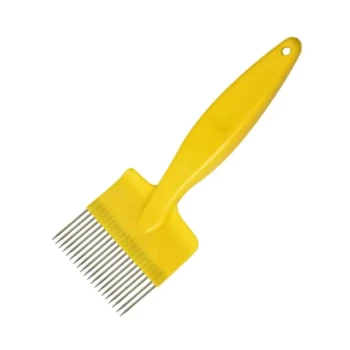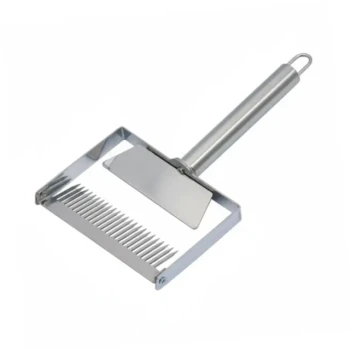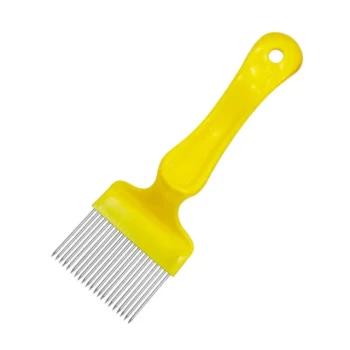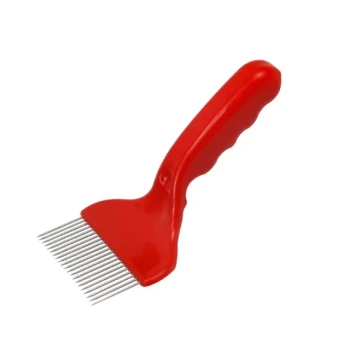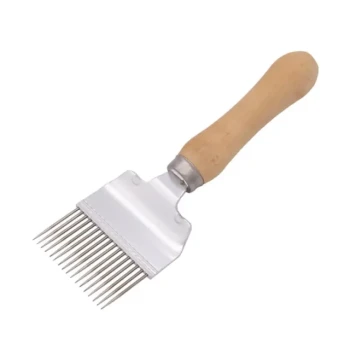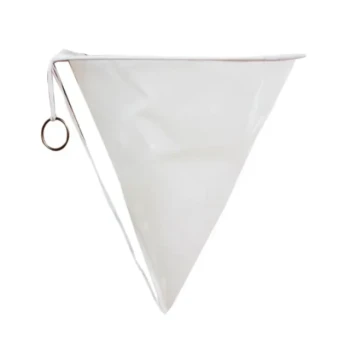Cut comb honey is the most natural form of honey you can consume, consisting of raw honey still sealed within its original beeswax honeycomb, cut directly from the hive's frame. The preparation involves carefully selecting a fully capped comb, removing it from its frame, and cutting it into neat, portioned squares for packaging.
Cut comb honey represents honey in its purest state, but its production is a deliberate process requiring specific hive conditions—namely, the use of frames without wire foundation and a comb that is fully sealed by the bees.
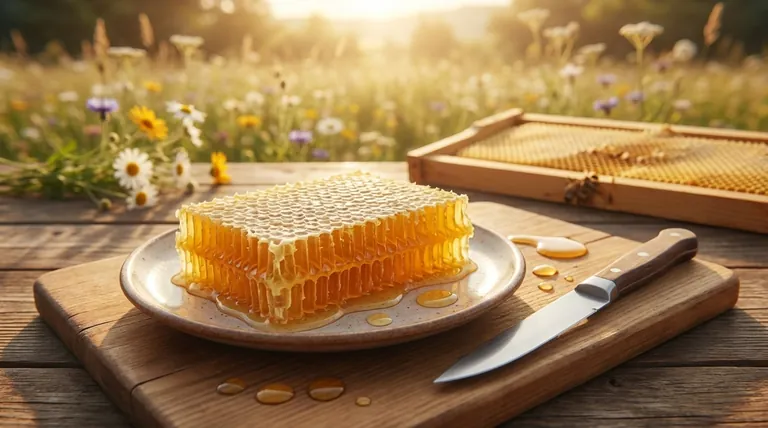
The Appeal of Comb Honey
Unaltered Purity and Flavor
Comb honey is prized because it is completely unprocessed. The honey remains sealed in the individual wax cells where the bees placed it, preserving its delicate and nuanced flavors that can be lost during extraction and processing.
The Natural Edible Package
The beeswax comb itself is entirely edible. Consuming the honey and wax together provides a unique texture and is the most traditional way to enjoy honey, just as it exists inside the hive.
A High-Value, Artisanal Product
Because it is presented in its most pristine form, cut comb honey is often considered a premium product. Its visual appeal and reputation for purity allow it to command a higher price than extracted liquid honey.
The Preparation Process Explained
Step 1: Selecting the Perfect Comb
The process begins with selecting the right frame from the hive. A beekeeper looks for a comb that is fully "capped"—meaning the bees have filled the cells with honey and sealed them with a fresh layer of beeswax. This capping is a crucial signal that the honey has been dehydrated to the correct moisture content (under 18.6%) to prevent fermentation and spoilage.
Step 2: The Foundation Requirement
Successful cut comb production depends entirely on the frame's internal structure. It can only be done with foundationless frames or frames that use a pure, wireless wax foundation. Standard frames often contain wires for structural support, which would make cutting the comb into clean sections impossible.
Step 3: Cutting and Portioning
The beekeeper removes the entire comb from the frame and lays it on a clean cutting surface. Using a sharp knife, they carefully cut the comb into uniform squares or rectangles. Precision is key to creating an appealing final product.
Step 4: Packaging for Presentation
Once cut, the sections are placed into suitable containers, typically clear plastic boxes that show off the perfect hexagonal pattern of the comb. This protects the delicate comb and prevents the honey from leaking.
Understanding the Critical Limitations
Why Foundation Type is Non-Negotiable
You cannot produce cut comb honey from a frame with wired foundation. The wires are embedded within the wax to provide strength and guide the bees, but they obstruct any attempt to slice the comb cleanly. This makes foundation choice a critical decision from the very beginning.
The Risk of an Uncapped Comb
Using a comb that isn't fully sealed is a significant mistake. Uncapped honey contains too much water, making it unstable and highly susceptible to fermentation. A fully capped comb is the beekeeper's guarantee of quality and shelf-stability.
The Use of Specialized Equipment
While not strictly necessary, many beekeepers who focus on this product use special equipment called comb honey supers. These are shallower hive boxes designed to encourage bees to build pristine, even comb that is ideal for cutting.
How to Approach Comb Honey
- If you are a beekeeper aiming for a premium product: You must plan ahead by using foundationless or wireless wax foundation frames in your hives.
- If you are a consumer seeking maximum purity: Choose cut comb honey to experience its unaltered flavor profile and unique texture, knowing it is the least-processed form available.
- If you are exploring foundationless beekeeping: Producing cut comb honey is a natural and rewarding outcome of this management style.
Embracing cut comb honey is a choice to value and enjoy this remarkable natural product in its most perfect and original state.
Summary Table:
| Aspect | Key Information |
|---|---|
| Definition | Raw honey in its original, edible beeswax comb, cut from the hive frame. |
| Key Requirement | Must be produced using foundationless or wireless wax foundation frames. |
| Ideal Comb | Fully capped by bees to ensure low moisture content and prevent fermentation. |
| Consumer Appeal | Unprocessed, premium product with unique texture and unaltered flavor. |
Ready to produce or supply premium cut comb honey?
At HONESTBEE, we specialize in the wholesale beekeeping supplies that commercial apiaries and distributors need to succeed. Producing high-quality cut comb honey requires the right foundation from the start.
We supply the essential equipment for foundationless beekeeping, helping you create a premium, high-value product that commands a better price. Let us be your partner in purity and profitability.
Contact HONESTBEE today to discuss your wholesale supply needs!
Visual Guide

Related Products
- Professional Durable Plastic Handle Honey Uncapping Fork
- Extra-Wide All-Stainless Steel Honey Uncapping Fork with T-Handle
- Professional Customizable Honey Uncapping Fork with Adjustable Tine Options
- Professional Wide Head Honey Uncapping Fork for Beekeeping
- 10L Stainless Steel Electric Honey Press Machine
People Also Ask
- What tools can be used to remove the beeswax capping? Choose the Right Tool for Your Harvest
- What is the overall recommendation for beginner beekeepers regarding uncapping tools? Master Your First Honey Harvest
- What is the use of a bee knife? Essential for Efficient Honey Harvesting
- What are the main parts of a honey extractor? A Guide to Efficient Honey Harvesting
- What is the use of an uncapping knife? Master the First Step of Honey Harvesting
